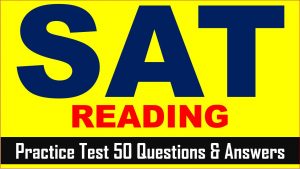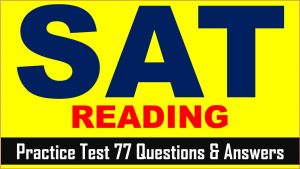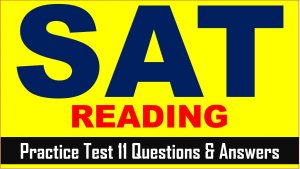SAT (Scholastic Assessment Test) is a standard test, used for taking admission to undergraduate programs of universities or colleges of the United States. SAT is developed and published by the College Board, an organization in the United States, administered by the Educational Testing Service. In this article of AKVTutorials, you will get SAT Practice Test 7 Answers | SAT 2024 Prep Online Tutor AMBiPi.
SAT Reading Practice Passage
This passage is adapted from Iain King, “Can Economics Be Ethical?” ©2013 by Prospect Publishing.
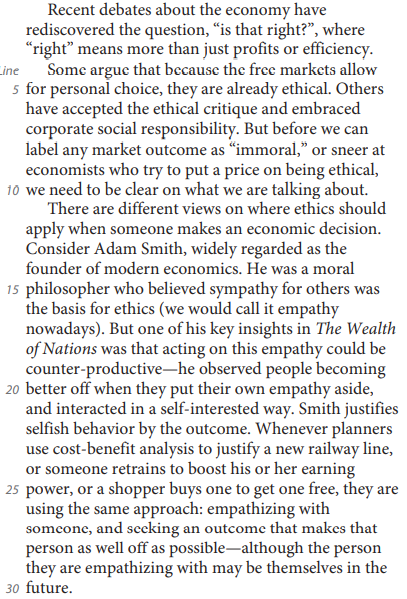
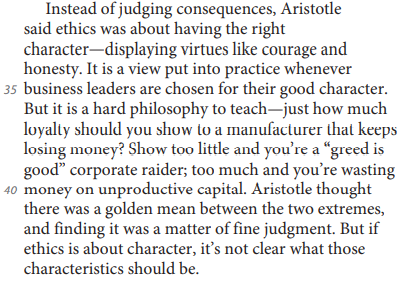
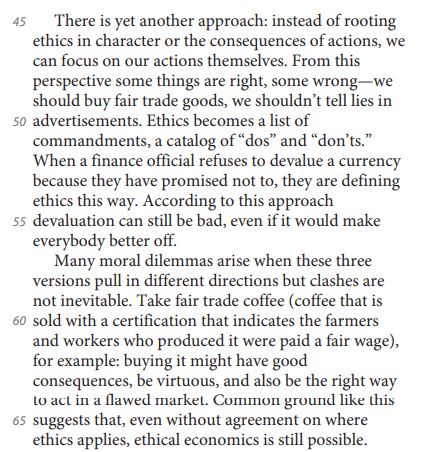
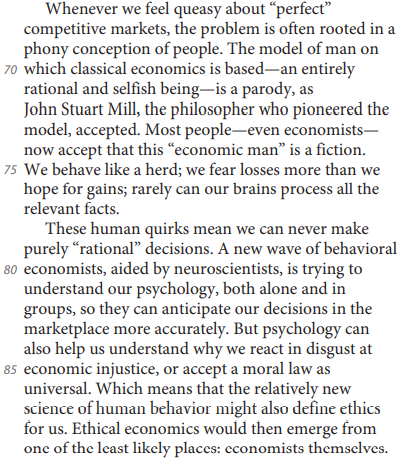
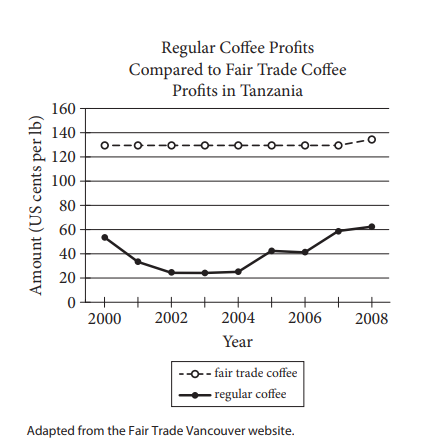
SAT Reading Comprehension Practice Test Questions
SAT Practice Test 7 Question No 1
The main purpose of the passage is to
Option A: consider an ethical dilemma posed by cost-benefit analysis.
Option B: describe a psychology study of ethical economic behavior.
Option C: argue that the free market prohibits ethical economics.
Option D: examine ways of evaluating the ethics of economics.
SAT Practice Test 7 Answer No 1
Show/Hide Answer
Option D :
In lines 11-12, the author introduces the main purpose of the passage, which is to examine the “different views on where ethics should apply when someone makes an economic decision.” The passage examines what historical figures Adam Smith, Aristotle, and John Stuart Mill believed about the relationship between ethics and economics.
Choices A, B, and C are incorrect because they identify certain points addressed in the passage (cost-benefit analysis, ethical economic behavior, and the role of the free market), but do not describe the passage’s main purpose.
SAT Practice Test 7 Question No 2
In the passage, the author anticipates which of the following objections to criticizing the ethics of free markets?
Option A: Smith’s association of free markets with ethical behavior still applies today.
Option B: Free markets are the best way to generate high profits, so ethics is a secondary consideration.
Option C: Free markets are ethical because they are made possible by devalued currency.
Option D: Free markets are ethical because they enable individuals to make choices.
SAT Practice Test 7 Answer No 2
Show/Hide Answer
Option D :
In lines 4-5, the author suggests that people object to criticizing ethics in free markets because they believe free markets are inherently ethical, and therefore, the role of ethics in free markets is unnecessary to study. In the opinion of the critics, free markets are ethical because they allow individuals to make their own choices about which goods to purchase and which goods to sell.
Choices A and B are incorrect because they are not objections that criticize the ethics of free markets. Choice C is incorrect because the author does not present the opinion that free markets depend on the devalued currency.
SAT Practice Test 7 Question No 3
Which choice provides the best evidence for the answer to the previous question?
Option A: Lines 4-5 (“Some… ethical”)
Option B: Lines 7-10 (“But… about”)
Option C: Lines 21-22 (“Smith… outcome”)
Option D: Lines 52-54 (“When… way”)
SAT Practice Test 7 Answer No 3
Show/Hide Answer
Option A :
In lines 4-5, the author states that some people believe that free markets are “already ethical” because they “allow for personal choice.” This statement provides evidence that some people believe criticizing the ethics of free markets is unnecessary because free markets permit individuals to make their own choices.
Choices B, C, and D are incorrect because they do not provide the best evidence of an objection to a critique of the ethics of free markets.
SAT Practice Test 7 Question No 4
As used in line 6, “embraced” most nearly means
Option A: lovingly held.
Option B: readily adopted.
Option C: eagerly hugged.
Option D: reluctantly used.
SAT Practice Test 7 Answer No 4
Show/Hide Answer
Option B :
In lines 6-7, the author states that people “have accepted the ethical critique and embraced corporate social responsibility.” In this context, people “embrace,” or readily adopt corporate social responsibility by acting in a certain way.
Choices A, C, and D are incorrect because in this context “embraced” does not mean lovingly held, eagerly hugged, or reluctantly used.
SAT Practice Test 7 Question No 5
The main purpose of the fifth paragraph (lines 45-56) is to
Option A: develop a counterargument to the claim that greed is good.
Option B: provide support for the idea that ethics is about character.
Option C: describe a third approach to defining ethical economics.
Option D: illustrate that one’s actions are a result of one’s character.
SAT Practice Test 7 Answer No 5
Show/Hide Answer
Option C :
The third and fourth paragraphs of the passage present Adam Smith’s and Aristotle’s different approaches to defining ethics in economics. The fifth paragraph offers a third approach to defining ethical economics, how “instead of rooting ethics in character or the consequences of actions, we can focus on our actions themselves. From this perspective some things are right, some wrong” (lines 45-48).
Choice A is incorrect because the fifth paragraph does not develop a counterargument. Choices B and D are incorrect because although “character” is briefly mentioned in the fifth paragraph, its relationship to ethics is examined in the fourth paragraph.
SAT Practice Test 7 Question No 6
As used in line 58, “clashes” most nearly means
Option A: conflicts.
Option B: mismatches.
Option C: collisions.
Option D: brawls.
SAT Practice Test 7 Answer No 6
Show/Hide Answer
Option A :
In lines 57-59, the author states that “Many moral dilemmas arise when these three versions pull in different directions but clashes are not inevitable.” In this context, the three different perspectives on ethical economics may “clash,” or conflict, with one another.
Choices B, C, and D are incorrect because in this context “clashes” do not mean mismatches, collisions, or brawls.
SAT Practice Test 7 Question No 7
Which choice best supports the author’s claim that there is the common ground shared by the different approaches to ethics described in the passage?
Option A: Lines 11-12 (“There… decision”)
Option B: Lines 47-50 (“From… advertisements”)
Option C: Lines 59-64 (“Take… market”)
Option D: Lines 75-77 (“We… facts”)
SAT Practice Test 7 Answer No 7
Show/Hide Answer
Option C :
In lines 59-64, the author states, “Take fair trade coffee . . . for example: buying it might have good consequences, be virtuous, and also be the right way to act in a flawed market.” The author is suggesting that in the example of fair trade coffee, all three perspectives about ethical economics—Adam Smith’s belief in consequences dictating the action, Aristotle’s emphasis on character, and the third approach emphasizing the virtue of good actions—can be applied. These three approaches share “common ground” (line 64), as they all can be applied to the example of fair trade coffee without contradicting one another.
Choices A, B, and D are incorrect because they do not show how the three different approaches to ethical economics share common ground. Choice A simply states that there are “different views on ethics” in economics, choice B explains the third ethical economics approach, and choice D suggests that people “behave like a herd” when considering economics.
SAT Practice Test 7 Question No 8
The main idea of the final paragraph is that
Option A: human quirks make it difficult to predict people’s ethical decisions accurately.
Option B: people universally react with disgust when faced with economic injustice.
Option C: understanding human psychology may help to define ethics in economics.
Option D: economists themselves will be responsible for reforming the free market.
SAT Practice Test 7 Answer No 8
Show/Hide Answer
Option C :
In lines 83-88, the author states that psychology can help “define ethics for us,” which can help explain why people “react in disgust at economic injustice, or accept a moral law as universal.”
Choices A and B are incorrect because they identify topics discussed in the final paragraph (human quirks and people’s reaction to economic injustice) but not their main idea. Choice D is incorrect because the final paragraph does not suggest that economists may be responsible for reforming the free market.
SAT Practice Test 7 Question No 9
Data in the graph about per-pound coffee profits in Tanzania most strongly support which of the following statements?
Option A: Fairtrade coffee consistently earned greater profits than regular coffee earned.
Option B: The profits earned from regular coffee did not fluctuate.
Option C: Fairtrade coffee profits increased between 2004 and 2006.
Option D: Fairtrade and regular coffee were earning equal profits by 2008.
SAT Practice Test 7 Answer No 9
Show/Hide Answer
Option A :
The data in the graph show that in Tanzania between the years 2000 and 2008, fair trade coffee profits were around $1.30 per pound, while profits of regular coffee were in the approximate range of 20–60 cents per pound.
Choices B, C, and D are incorrect because they are not supported by information in the graph.
SAT Practice Test 7 Question No 10
Data in the graph indicate that the greatest difference between per-pound profits from fair-trade coffee and those from regular coffee occurred during which period?
Option A: 2000 to 2002
Option B: 2002 to 2004
Option C: 2004 to 2005
Option D: 2006 to 2008
SAT Practice Test 7 Answer No 10
Show/Hide Answer
Option B :
The data in the graph indicate that between 2002 and 2004 the difference in per-pound profits between fair trade and regular coffee was about $1. At this time, fair-trade coffee was valued at around $1.30 per pound and regular coffee was valued at around 20 cents per pound. The graph also shows that regular coffee recorded the lowest profits between the years 2002 and 2004, while fair trade coffee remained relatively stable throughout the entire eight-year span (2000 to 2008).
Choices A, C, and D are incorrect because they do not indicate the greatest difference between per-pound profits for fair trade and regular coffee.

